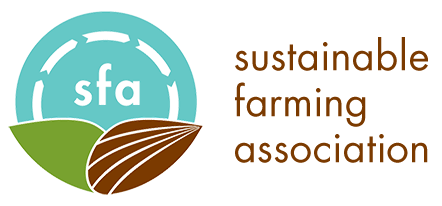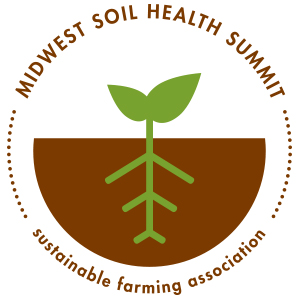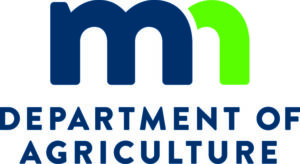2023 Midwest Soil Health Summit Sessions & Presenters
Wednesday, March 8th
12:00 p.m. Registration opens
1:00 p.m. Welcome
1:15-2:30 p.m. Managing Diversity for Soil Health Enhancement
Gene Goven
Gene is farmer and rancher in North Dakota who has implemented the soil health principles on his ranch. He will share how he uses livestock as a tool to improve soil and how through grazing management he has increased total grass productivity by 450% and today leaves more grass behind than he used to produce.
2:45-3:30 p.m. Soil Health Systems and Water Behavior
Dr. Anna Cates
Dr. Cates will share on-farm research from MN comparing farms using conventional and soil health practices. Though some common biological soil health indicators don't budge, soil water behavior changes show how practices like reduced tillage and cover crops are changing the fundamental structure of the soil.
3:45-5:00 p.m. Farmer Panel
Tom Cotter, Cotter Farms, Austin MN
Dana Didrikson, Didrikson Farms, Badger MN
Andy Linder, Agro Solutions, Linder Family Farms, Easton MN
Anne Schwagerl, Prairie Point Farm, Browns Valley MN
5:00-5:45 p.m. Discussion Tables
Pick a table and bring your questions for:
- Dr. Anna Cates, Minnesota Office for Soil Health, University of Minnesota Assistant Extension Profession
- Gene Goven, Goven Ranch, Turtle Lake ND
- Dana Didrickson, Didrikson Farms, Badger MN
- Tom Cotter, "Organic vs. Conventional Notill", Cotter Farms, Austin MN
- Andy Linder, "Interseeding Cover Crops", Agro Solutions, Linder Family Farms, Easton MN
5:45-9:00 p.m. Supper and Social Hour
Thursday, March 9th
Buffet Breakfast
Begins at 7:15 AM.
Welcome begins at 8:00 AM.
8:15-9:45 a.m. The Benefits of Working With Nature
Dr. Elaine Ingham
Dr. Ingham uncovered the Soil Food Web nearly four decades ago and has been pioneering research about Soil Food Web ever since. Widely recognized as the world's foremost soil biologist, she's passionate about empowering people to bring the soils in their communities back to life.
In this session, learn how farmers can reduce the cost of growing crops, increase nutrient sequestration and end the use of toxic chemicals to grow delicious, highly beneficial foods.
Agriculture as promoted by humans is destructive. Instead of working together as nature does, humans deal with a lack of nutrients, or high levels of pests or diseases, using a "shoot first and ask questions later" approach. As far back as the earliest written records about agriculture, humans attempted to kill first, and ask questions later. The over-use of tillage to kill weeds and improve infiltration, the use of toxic chemicals to destroy pests and diseases, the use of high quantities of inorganic salts to try to fertilize the soil, lead to the destruction of entire cultures of humans. Nature does not use that type of management, but instead, develops beneficial communities of organisms that work together to cycle nutrients, to prevent diseases and parasites, without using inorganic fertilizers (i.e., salts in most instances that are toxic to soil life) pesticides and other toxic, antimicrobial chemicals. Nature uses soil life to build structure to hold water in the soil, so that dry summer conditions will not result in disaster for the farmer. We can use this knowledge to work with nature, to regenerate conditions that allow desired foods to thrive without the use of destructive methods.
9:45-10:30 a.m. SFA Staff Experts Panel
- Kent Solberg, Senior Technical Advisor
- Doug Voss, Grazing Lead
- Angie Walter, Central Minnesota Education Coordinator, Dairy Grazing Apprenticeship
- Jared Luhman, Soil Health Lead
- Moderated by Jonathan Kilpatrick, Soil Health Specialist
10:45-11:45 a.m. Nitrogen, Phosphorus, and Potassium: Maximizing Plant Macro-nutrients through Soil Biology
Kent Solberg
High commercial fertilizer costs and limited access to manures such as poultry litter are forcing farms to rethink their fertilizer programs. Around the world, farms are coming under increasing scrutiny over fertilizer and manure use. What's a farmer to do? In this session, SFA Senior Technical Advisor, Kent Solberg will help you understand how much nitrogen, phosphorus, potassium and other plant nutrients are already available on your farm and how you can access them for your crop and forage production.
11:45 a.m.-12:30 p.m. Discussion Tables
Pick a table and bring your questions for:
Dr. Elaine Ingham, "soil microbiology," Soil Food Web School
Dave Brandt, "cover crops/no-till," Brandt Farm, Carroll Ohio, Walnut Creek Seeds
Kent Solberg, "regenerative crop farming," Seven Pines Farm. Verndale, Minn.
Doug Voss, "custom grazing/public lands grazing," Voss Farms, Paynesville, Minn.
Gene Goven, "livestock integration on cropland," Goven Ranch, Turtle Lake N.D.
Jared Luhman, "adaptive grazing management," Grass Fed Cattle Company, Edina, Minn.
Angie Walter, "organic/grazing dairy," Walter Organic Family Farm, Villard, Minn.
Jonathan Kilpatrick, "sheep and goats," SFA Soil Health Specialist
Patrick Freeze, "Soil Testing/Biological Tests", Ward Laboratories, Inc
12:30-1:30 p.m. Lunch
1:30-3:00 p.m. Diversity: A Closer Look at Succession, F:B Ratios, and Micronutrients
Dr. Elaine Ingham
We have been observing that changes in cycling processes below ground lead to changes in the plant community aboveground. A quantitative, predictive measure of where communities are in succession would help us understand what the outcome is when soil life is altered. If F:B (fungal biomass divided by bacterial biomass) increases as successional processes improve, we might have a way to quantify how far along succession has proceeded. In cases where the F:B ratio has decreased, we see earlier stages of plant communities re-develop. As the F:B recovers and starts to become more fungal-dominated, then we see later successional plant communities developing. This relationship between fungal biomass and fungal foods with bacterial biomass and bacterial-foods goes hand-in-hand with more and more complexity of foods as fungi become the predominant microbe present in soil. Where these observations will lead us is uncertain, but basically these data suggest that nature manages our planet in ways that we do not understand.
3:15-5:00 p.m. Improving Your Bottom Line with Soil Health
Dave Brandt
Dave Brandt is a no-tiller, cover cropper and row crop farmer with decades of experience building soil and is one of the first farmers to implement the soil health principles into a commodity row crop farm. Over the years he has experimented with new things, succeeded and failed, learned from his mistakes and improved his operation year after year.
Today, he shares his story and what he has learned about the soil health principles and have how they have translated to increased profit on his farm.


